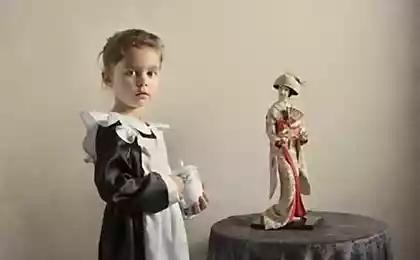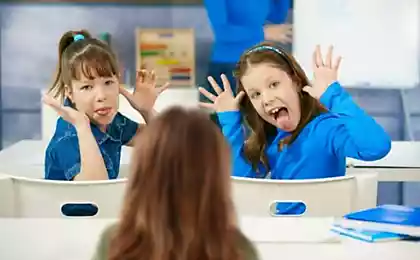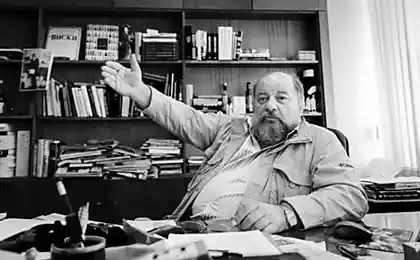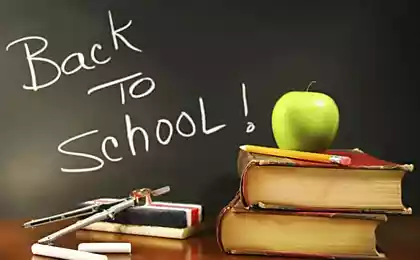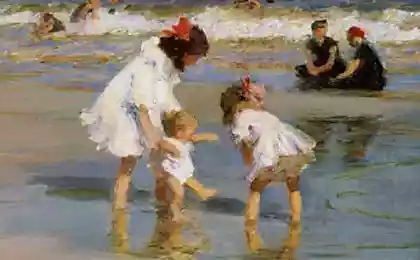186
Our child has been going to school in Norway for a year now, and I can say for sure that our education is still far from that level.
One of the main tasks of any society is to cultivate a worthy replacement. Therefore, in highly developed countries, a lot of effort is spent on properly educating children and giving them a quality education. Each approach has its own characteristics.

And today's edition. "Site" let's talk about Norway and school education there. There are many differences from what we are used to. However, all sorts of “oddities” do not prevent the Norwegian education system from occupying high places in the world in terms of efficiency.
It so happened that we moved to Norway and the child went to school here. And it is the middle classes (fifth to tenth) that seem particularly interesting to me. So interesting that I want to talk about them, writes Irina.
“It is believed that the future belongs to those people who know how to work in a team. Therefore, each child is taught to be part of the team, get along with peers (and not only peers), work for the overall result.”
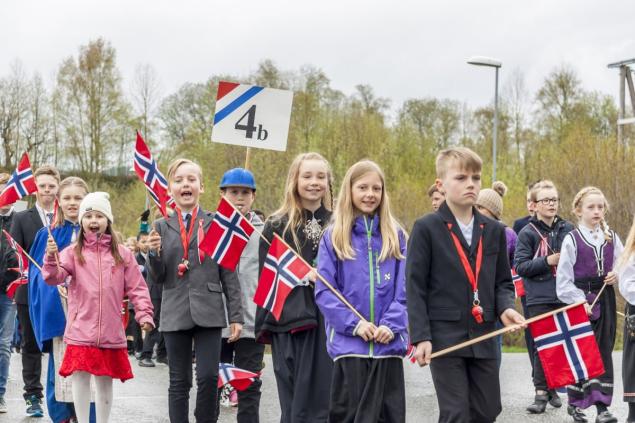
“Everyone is educated to feel like a leader. Not the main backer, but the leader in the business that he likes best, to which he is most disposed.

“In this educational universe, there are no ratings and honorary boards, because everyone here is good, but each in his own way. The child knows that all doors are open to him, and he can go any way, if he is willing to work with the teacher and alone.
Grades are not given here until the 8th grade. And they don't. The teacher determines the level of knowledge of a particular child. And he adapts the curriculum to the abilities and needs of the student. At the centre is not the school, the staff, the paper reports, but the child.”

From the 5th to the 8th grade, children spend time studying only nine subjects: English, Norwegian, mathematics, technology, art, biology, sociology, physical education, nutrition and health. Although in the post-Soviet space, an eighth grader has to simultaneously study under two dozen subjects. Twice as much! It's a huge difference.
“All of our parents have little homework in Norway. Only sometimes a child can be asked some text that needs to be translated in a week. Sometimes they give a problem to solve, which also takes several days to solve.”
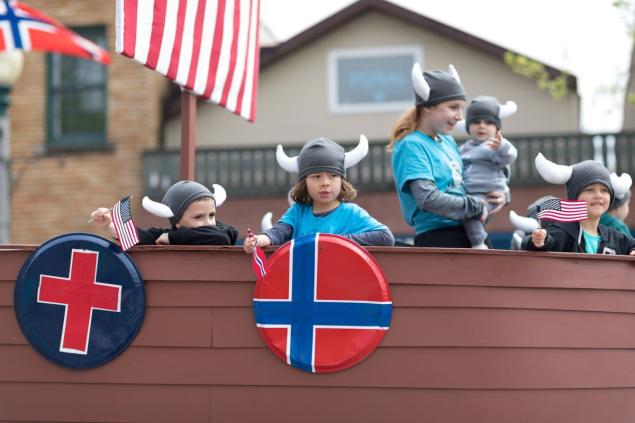
“Our parents will certainly applaud this approach. But what will our teachers and other educators say? Outraged? Howling that with such training the child will know nothing? There is no need to worry so much, because in international rankings, education in Norway occupies the highest places from year to year.”
The main feature of the educational process is that all subjects in the program are interconnected. The child learns not a single subject, but a whole case that allows you to learn a lot about physics, chemistry, algebra, geometry, as well as the relationships of one with another.”
“The material is presented in a light and often even playful manner. The student is not overloaded with material, not forced in a hurry to memorize paragraphs and write off notebooks. After all, what good is it if a child draws dozens of contour maps, but never learns the connection between history and geography? ?
For example, in a Norwegian school, when studying sociology, a student “unnoticed” for himself studies the course of political processes, geography, world history, patriotic education, and civic education. Each case lays a whole layer of knowledge that the child comprehended and analyzed. So he just can't forget it.”

“It is also interesting that, despite the technological nature of Norway, there is no subject that would be analogous to our computer science. But in the process of learning technology is used constantly. For example, children can solve a math problem and then transfer that data to Ecel and PowerPoint, build diagrams and graphs, make presentations. And all this under the guidance of one teacher”.
The subject of nutrition and health is not so simple either. My son was making chocolate pastries the other day. Three lessons in a row, the teacher told them about chocolate: where and how it grows, how it looks, how it is collected, how and where it is exported, what is produced from it, what trace elements are contained here and how they affect our body.
As we can see, geography, chemistry, economics, biology, and anatomy are studied here. Thus, children in a playful manner not only enjoy learning to cook, but also gain knowledge in a variety of subjects. And with what delight the son described the whole process — lovingly watch and listen, — says Irina.

Such a comprehensive method of study, together with the lack of homework, looks quite attractive. For this reason, Norwegian students rush to school. Isn’t it important that your child enjoys learning every day?

And today's edition. "Site" let's talk about Norway and school education there. There are many differences from what we are used to. However, all sorts of “oddities” do not prevent the Norwegian education system from occupying high places in the world in terms of efficiency.
It so happened that we moved to Norway and the child went to school here. And it is the middle classes (fifth to tenth) that seem particularly interesting to me. So interesting that I want to talk about them, writes Irina.
“It is believed that the future belongs to those people who know how to work in a team. Therefore, each child is taught to be part of the team, get along with peers (and not only peers), work for the overall result.”

“Everyone is educated to feel like a leader. Not the main backer, but the leader in the business that he likes best, to which he is most disposed.

“In this educational universe, there are no ratings and honorary boards, because everyone here is good, but each in his own way. The child knows that all doors are open to him, and he can go any way, if he is willing to work with the teacher and alone.
Grades are not given here until the 8th grade. And they don't. The teacher determines the level of knowledge of a particular child. And he adapts the curriculum to the abilities and needs of the student. At the centre is not the school, the staff, the paper reports, but the child.”

From the 5th to the 8th grade, children spend time studying only nine subjects: English, Norwegian, mathematics, technology, art, biology, sociology, physical education, nutrition and health. Although in the post-Soviet space, an eighth grader has to simultaneously study under two dozen subjects. Twice as much! It's a huge difference.
“All of our parents have little homework in Norway. Only sometimes a child can be asked some text that needs to be translated in a week. Sometimes they give a problem to solve, which also takes several days to solve.”

“Our parents will certainly applaud this approach. But what will our teachers and other educators say? Outraged? Howling that with such training the child will know nothing? There is no need to worry so much, because in international rankings, education in Norway occupies the highest places from year to year.”
The main feature of the educational process is that all subjects in the program are interconnected. The child learns not a single subject, but a whole case that allows you to learn a lot about physics, chemistry, algebra, geometry, as well as the relationships of one with another.”
“The material is presented in a light and often even playful manner. The student is not overloaded with material, not forced in a hurry to memorize paragraphs and write off notebooks. After all, what good is it if a child draws dozens of contour maps, but never learns the connection between history and geography? ?
For example, in a Norwegian school, when studying sociology, a student “unnoticed” for himself studies the course of political processes, geography, world history, patriotic education, and civic education. Each case lays a whole layer of knowledge that the child comprehended and analyzed. So he just can't forget it.”

“It is also interesting that, despite the technological nature of Norway, there is no subject that would be analogous to our computer science. But in the process of learning technology is used constantly. For example, children can solve a math problem and then transfer that data to Ecel and PowerPoint, build diagrams and graphs, make presentations. And all this under the guidance of one teacher”.
The subject of nutrition and health is not so simple either. My son was making chocolate pastries the other day. Three lessons in a row, the teacher told them about chocolate: where and how it grows, how it looks, how it is collected, how and where it is exported, what is produced from it, what trace elements are contained here and how they affect our body.
As we can see, geography, chemistry, economics, biology, and anatomy are studied here. Thus, children in a playful manner not only enjoy learning to cook, but also gain knowledge in a variety of subjects. And with what delight the son described the whole process — lovingly watch and listen, — says Irina.

Such a comprehensive method of study, together with the lack of homework, looks quite attractive. For this reason, Norwegian students rush to school. Isn’t it important that your child enjoys learning every day?
Why fans are worried about what Princess Charlene looks like now, there is no trace of the former beauty
Perfume fashion of the coming summer, three fragrances that without words declare the status of a woman
